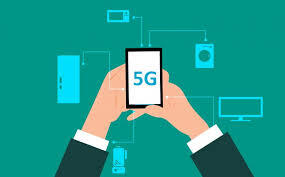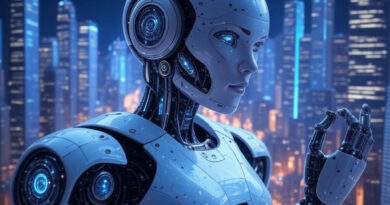Connected World: 5G, IoT, and the Future of Everyday Tech
The way we live has always been shaped by technology. Over the years, small shifts have turned into sweeping changes. Now, we are standing at another one of those crossroads. Thanks to 5G and the Internet of Things, or IoT for short, everyday life is about to get a serious makeover. What once sounded like science fiction — smart homes, self-driving cars, instant doctor visits from your living room — is becoming real life.
5G: More Than Just Speed
Most people think 5G is just faster internet for your phone. It is, but it is also so much more. 5G offers extremely low delays, meaning that things happen almost the second you tell them to. It also connects many more devices at once compared to older networks.
For example, a self-driving car cannot afford to have even a tiny delay when sending or receiving information. It needs to know instantly when a light turns red or when a person steps onto the street. 5G makes that kind of split-second communication possible.
Beyond cars, think about smart cities. Streetlights that adjust their brightness based on how many people are around. Trash cans that send a message when they are full. Emergency services that get information in real-time. These things require hundreds, sometimes thousands, of devices all talking to each other without crashing the system. 5G can handle that.

IoT: When Everything Talks
The Internet of Things is just a fancy way of saying “everyday stuff connected to the internet.” Your smart thermostat, your fitness tracker, even your fridge — if they can talk to the internet, they are part of the IoT.
Right now, most of these gadgets work fine on Wi-Fi or 4G. But 5G takes it to a whole new level. Imagine a world where your entire kitchen works together. Your fridge notices you are running low on milk, your grocery app automatically adds it to your shopping list, and your phone reminds you to pick it up as you drive by the store. You would not even have to think about it.
Hospitals are another big place where IoT is changing the game. Wearable devices can keep an eye on a patient’s health at home, sending updates to doctors without anyone needing to make a trip. That means faster care and fewer hospital stays, saving time, money, and lives.
Everyday Life: About To Get Smarter
It is easy to focus on big flashy changes, but a lot of the impact will be quiet. Subtle. Your day will simply feel smoother. Faster checkouts at stores. Traffic lights that actually seem to understand when there is no one around. Packages delivered by drones that fly over traffic jams.
Even your home will feel different. Smart assistants will get smarter. You could control everything from your lights to your locks with a few words or taps. Watching a movie? Your house can automatically lower the lights and adjust the thermostat for the perfect setting.
Work life will not be left behind either. With 5G, remote work could get a major upgrade. Meetings in virtual reality might feel almost as natural as meeting face-to-face. Manufacturing jobs could become safer, with robots taking care of dangerous tasks while humans oversee everything from a control room.
Risks We Cannot Ignore
With all these great things comes risk. More connected devices mean more chances for hackers to find a way in. Privacy becomes even more fragile when your fridge, car, and even your clothes are gathering data about you.
Security will need to catch up fast. Companies will have to make sure they build strong defenses from the start, not as an afterthought. Governments might have to step in too, setting rules for how personal data is collected, stored, and shared.
Another problem? Not everyone will get access to these advances at the same time. Rural areas often struggle to get good internet service even today. If 5G and IoT roll out mainly in cities, the gap between those who have the latest tech and those who do not could get wider.
Looking Ahead
The future powered by 5G and IoT is not a distant dream. It is already starting to shape up around us. In some places, smart traffic systems are being tested. In others, farmers are using IoT devices to monitor soil and weather conditions to grow better crops.
As with any major shift, there will be growing pains. Some changes will happen quietly. Others might come with noise and controversy. But one thing is certain: the next decade will not look much like the last one.
People will have to stay flexible. Learn new skills. Think differently about privacy, work, and even what it means to have a home or a car. It will be messy at times but also exciting, full of fresh ideas and possibilities.
In a connected world, the old boundaries between work and play, city and countryside, even between products and services, will blur. Life will be less about owning devices and more about what those devices can do together. As 5G spreads and the Internet of Things grows, the ordinary will become extraordinary — not overnight but step by step.
The only question left is: Are we ready to keep up with it?




